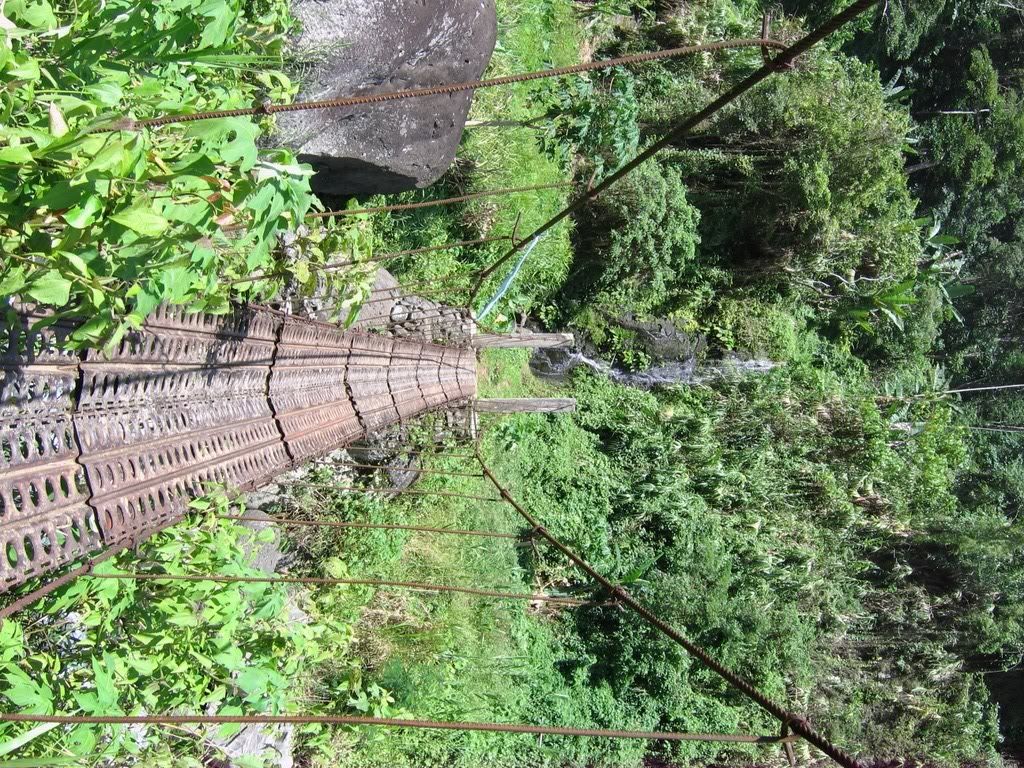wishing for a firecracker-free new year's eve
The midday news on TV reported a fire in Bocaue, Bulacan caused by -- what else? -- the spark from a firecracker.
Around this time every year, print, radio and TV coverage of the yearend revelry are full of people -- mostly young children -- injured by firecrackers. Scores of victims are rushed to hospitals everywhere with blown-off fingers or hands. Will we ever learn?
a luxury?
A friend told me of a woman interviewed on a TV news program, lamenting that in previous years, her Php20,000 could buy more firecrackers. This year, the woman complained, the economy has not been as supportive of her firecracker-buying habit, and she got much less for her Php20,000. I didn't catch that news report myself, but I definitely think that woman is lucky enough to even have that kind of money to spend on firecrackers.
While children roam the streets begging -- or worse, rummaging through other people's garbage for food -- many Filipinos do not think twice about spending money on firecrackers. It has become almost a status symbol: one's ability to usher in the new year with the most, the biggest, the loudest firecrackers can make one the object of his neighbors' admiration or even envy. Never mind how big or small your house is, where you live, what you do for a living, or how educated you and your children are. All that matters is that, for new year's eve, you literally have money to burn.
effects on health
What many of us don't know -- or perhaps would rather overlook -- is how damaging firecrackers can be to our bodies.
The most obvious effects are to our ears and lungs. The website stop-fireworks.org lists the following effects of firecrackers (and even fireworks) to the ears:
Traumas due to crackers and explosions of fireworks are caused by impulsive bangs (bangs caused by high pressure blasts). The blast of exploding fireworks can reach more than 130 dB; in the immediate vicinity of public fireworks top levels of up to 190 dB can be reached and around 150 dB at farther distances. (In comparison: 130 decibels are measured at a distance of 100 m from jet enginges; 160 or 170 decibels are louder than a pneumatic hammer.) The hearing organ is not adaptable to acute high pitched sounds (sudden impulsive noise endangers the ear more than continuous noise; it can result in a blast and explosion trauma; ear buzzing and hearing deficiency (tinnitus, etc.); sometimes it results in an explosion trauma followed by tearing apart the tympanum. A trauma caused by a blast with damaged capillary cells in the interior ear can lead to permanent hearing deficiency. ("The incidence of acoustic trauma due to New Year's firecrackers", Stefan K.-R. Plontke, Klaus Dietz, Cornelius Pfeffer, Hans-Peter Zenner, Eur Arch Otorhinolaryngol (2002) 259: 247-252, DOI: 10.1007/s00405-002-0451-4)
Children:
Firework, crackers and rockets can injure children's ears permanently. An explosion creates a blast trauma in the sensitive child ear which, besides the initial damage, can end in lasting, non-reparable injuries. [Please take a look at the site "Dangerous Decibels" (A public health partnership for prevention of noise-induced hearing loss) http://www.dangerousdecibels.org/hearingloss.cfm.]
A document entitled "Happy Diwali without Crackers 2006" lists other effects. Firecrackers contain fine particles that we breathe in, which can cause respiratory illness such as chronic bronchitis and asthma, and heart diseases. Particles that remain in the air (suspended particulate matter) can lead to asthma, cancer, restrictive lung diseases, and pneumoconiosis. The sulphur dioxide (SO2) in firecrackers can cause eye burning, headaches, cancer, heart diseases, and respiratory problems such as pulmonary emphysema. Another ingredient, nitrous oxides, can cause lung irritation, chest tightness, viral infections, and airway blockages.
And these are just the effects on humans. Who knows how much more damage fireworks can cause in birds, whose lungs are much smaller than ours, and in dogs, whose ears are more sensitive than ours?
effects on the environment
It's true that new year's eve comes around only once a year. But that means nothing in the face of all the havoc mankind have already wrought on the environment. Firecrackers release gases that affect not only our bodies but also the environment. Aside from air and noise pollution, firecrackers leave behind nonbiodegradable waste -- which will contribute to our already choked-up landfills. After all the discourse on global warming, climate change, and saving Mother Earth, you would think we would have actually learned something. You would think all our choices would be responsible ones.
In all this, what is the government doing? Two cities in Metro Manila -- Marikina and Mandaluyong -- have been declared firecracker-free zones. Kudos to their city officials for taking such a stand. But as I drove along a crowded street in Mandaluyong yesterday with a friend, I had to avoid some firecrackers thrown my way. Apparently, small children have learned from their elders that they must throw the firecrackers as soon as they light them, as far away from themselves as possible. It just so happens that as far away sometimes means onto the street.
I wonder at the uniquely Pinoy way we celebrate our holidays. Just a few weeks ago, we crowded into churches for the misa de gallo (dawn mass). Hopefully, tonight, we won't crowd into hospitals with injuries caused by firecrackers.
A peaceful -- and hopefully firecracker-free -- 2008 to all!











